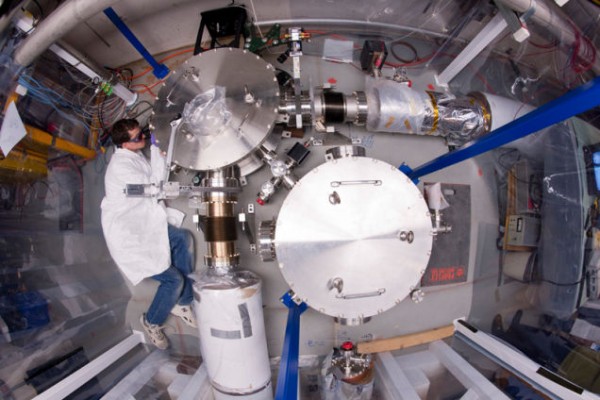For all we know, the three dimensional world we see around us is truly a hallucination — one that is really in 2d. It’s a marginally unsettling thought, yet its likewise one that physicists have been contemplating for quite a while. Shockingly, up to this point, a 2d universe wasn’t something we could confirm.
Presently, on account of an examination as of late dispatched at Fermi National Laboratory in Illinois, we may at last have the capacity to decide how the universe saves the data we collaborate with commonplace — and whether we’re existing in a multi dimensional image.

“For a huge number of years we have accepted that space is made of focuses and lines,” said Craig Hogan, executive of Fermilab’s Center for Particle Astrophysics, in an email to The Verge. At the same time “perhaps that is not right — it may be made of waves, the way that matter and vitality are.”
To figure out whether the universe is really two dimensional, physicists have set up a trial called the holometer. It comprises of two high-power laser pillars — bars that are generally identical to 200,000 laser pointers — that are part utilizing a shaft splitter, and sent perpendicularly down two 40 meter arms. At that point, at the end of the arms, the shafts are reflected once again to the splitter, where they’re recombined.
The thought here is that when the bars hit the splitter a second time, the bar splitter may move in a certain manner, and reason the shafts’ brilliance to vacillate. In the event that that happens, it would imply that space is persistently vibrating, kind of like a wave — a 2d wave, to be correct — and the spitter is continuously conveyed along space’s consistent jitter.
Such a result could in a general sense adjust our impression of the world, on the grounds that it would imply that data about our universe is put away on small two dimensional particles, ones that are around 10 trillion times littler than an iota. “On the off chance that you contemplate reality as a titan machine, that is all there may be. The aggregate data [it can contain] is limited,” Hogan said. “Eventually, it will be a major breaking point on what we can ever measure, think or do.”
On the off chance that we do live in a 2d world, there’s no telling how that may influence human life. “Einstein’s hypothesis of space-time is presently coded into everybody’s PDA, except that took very nearly 100 years,” Hogan said. So for the present, the analysts like to concentrate on the current workload: breaking down changes in returning light. Adjusting how people comprehend the universe will come later, if whatsoever.
“We ought to know inside a year or something like that if the impact is truly there.”

